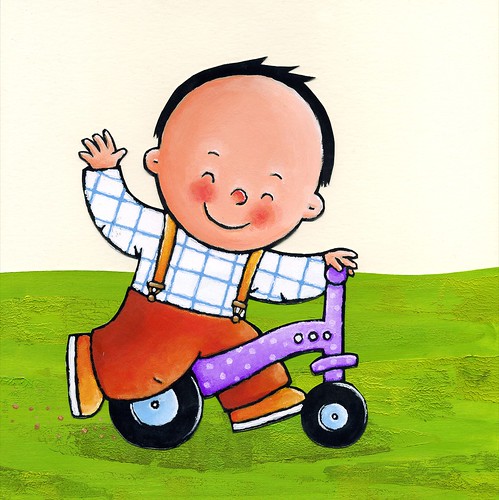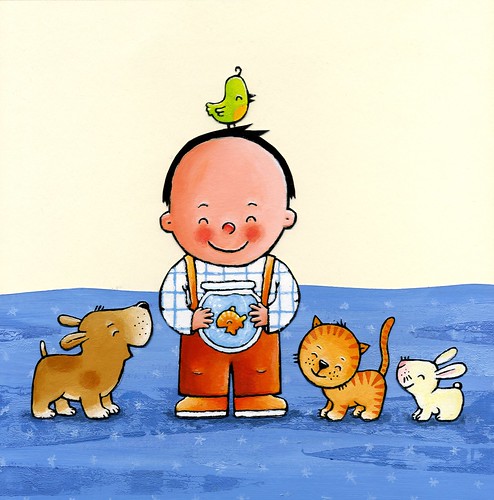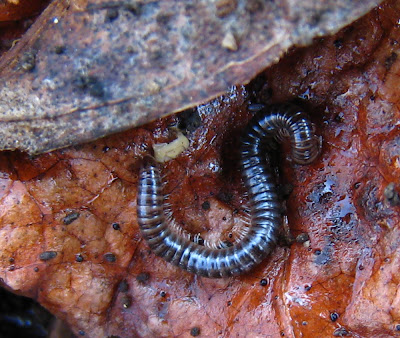37. 1991 Topps
Though generally not that great and a little on the cheap side, excuse me, way on the cheap side, 1991 Topps should be remembered as a watershed for the company, a much-needed transition (read: mid-life crisis) set from the mealy-cardboard Eighties to the sleek, sophisticated Nineties.
It was the last Topps set without images or color on the back of the card, and the last to use straight, no-gloss cardboard. Also, it was the first set on which Topps did any kind of foil stamping, with a delicate gold-foil palm trees logo for the much-sought-after Desert Shield parallel set distributed to the troops in the Middle East.
It was the first set where Topps put a heightened emphasis on the photography, probably due to a combination of trickled down Kodak/Stadium Club quality and the sudden realization that Upper Deck and Score routinely–and handily–beat them on the photo front. (Granted, this photo-centric attitude only lasted through the 1992 flagship set, but it was important nonetheless.) It was important not only because the subsequent photos were of higher quality, but there were a few cards that featured photos which were obviously staged. I’m not talking about a sidelines shot of a pitcher at the end of his windup. I’m talking about a photo like this one of Benito Santiago. The photographer is sitting on a crane, or an especially tall ladder, Benito’s got his game face on, the lighting’s just right, and it’s not an in-game shot. It’s got a cinematic quality, and because it seems Topps didn’t have access to the three-frame, overlapping motion photography that Upper Deck was using, it was as close as Topps could get to a stunt card.
It was also the first set where Topps acknowledged their own place in history on each and every card (not just as a sidebar or for a Turn Back the Clock subset). With ’40 Years of Baseball’ emblazoned just below the Topps logo on the front of each card, the company was staking their claim as the baseball card company. It seemed a little stodgy to me at the time, but it makes a lot of sense: it was a way–perhaps the best way, as it didn’t really require very much–to distinguish the cards in a very crowded marketplace. And wouldn’t you know it? 17 years later Topps still clings to this angle. (It also made sense at the time because Topps released Archives: 1953 Topps that same year. As an aside, I’ve decided not to include the three mid-Nineties Archives sets (1953, 1954, Dodgers) in this Countdown. I didn’t think it would be fair to the other sets, as 1953 and 1954 are, in their original form, top 10 classic sets, and the Dodgers set was a compilation set.)

Is 1991 a pretty set? Hardly. It’s not as ugly as its evil stepsister 1990 Topps, but it’s up there. I guess I would call it ‘utilitarian.’ Thin lines rule in the front-of-card design (an obvious precursor to 1992), and actually the gaudiest contribution to the front is the ’40 years…’ logo. Also, team names are represented by a variation of their respective logos, sitting atop a pennant-style rectangle (the first pennant since 1980). I believe the team logo thing was the first time this occurred on a Topps design (and last, thank God). As you can see from this card of Larry Walker, anything that wasn’t a line or line-based in its design (like the Rookie Cup) seems disjointed and out of place with the rest. The icon floats, which can work (see 1978 Topps)—just not here.
The backs aren’t anything to write home about, but at least the writing’s legible on a light background underscored by a gigantic ’40 years…’ logo. (Jeez, Topps really beat us over the head with that ’40 years and a mule’ crap, didn’t they? Did they think we wouldn’t get it if they only mentioned it once on the card?)
But you know what? I don’t remember this set because of any of these reasons. I remember it because it was cheap, it was boring (for the most part), and there was a ton of it out there.
 Hurray! For the first time since 2005, at least two fertile Kakapo eggs have been laid for this year's breeding season. Scoop.co.nz has the exciting news. It feels like such a long time since I was able to report such news, and this blog was less than a year old at the time.
Hurray! For the first time since 2005, at least two fertile Kakapo eggs have been laid for this year's breeding season. Scoop.co.nz has the exciting news. It feels like such a long time since I was able to report such news, and this blog was less than a year old at the time.












 Yes, I can feel your stares on the back of my neck. And I’m ready for the comments expressing your incredulity at my not including this set in the top 20 of the early decade. First ’93 Upper Deck and now this? This one even has an A-Rod rookie! What, exactly, are you smoking?
Yes, I can feel your stares on the back of my neck. And I’m ready for the comments expressing your incredulity at my not including this set in the top 20 of the early decade. First ’93 Upper Deck and now this? This one even has an A-Rod rookie! What, exactly, are you smoking?


 Hobbies are golf and racquetball… Favorite singer is Bruce Springsteen; actor is Robert De Niro; movie is Silence of the Lambs; book is the Bible.
Hobbies are golf and racquetball… Favorite singer is Bruce Springsteen; actor is Robert De Niro; movie is Silence of the Lambs; book is the Bible. While other kids my age were busy doing whippets under the bleachers after school, I was at home, in my room, by myself, blowing my mind with the three-photo cards found in 1992 Upper Deck. Upper Deck debuted the gimmick in 1989, but it was hardly old hat three years later. I mean, did you hear me? Three photos on one card! And they all overlapped! The concept rocked then, and it still rocks today (I’ve stared at this card of Ken Griffey, Jr. now for at least five minutes straight and still can’t figure out if I’m looking at three or four overlapped photos).
While other kids my age were busy doing whippets under the bleachers after school, I was at home, in my room, by myself, blowing my mind with the three-photo cards found in 1992 Upper Deck. Upper Deck debuted the gimmick in 1989, but it was hardly old hat three years later. I mean, did you hear me? Three photos on one card! And they all overlapped! The concept rocked then, and it still rocks today (I’ve stared at this card of Ken Griffey, Jr. now for at least five minutes straight and still can’t figure out if I’m looking at three or four overlapped photos).


 I should come right and say it: I was a Score Man in the early Nineties. After what I thought were ugly 1988 and 1989 sets, there was little the flagship could do wrong over the next five years (divided into two distinct parts: the free wheeling, massive mass-consumption trilogy from 1990 to 1992, and the more refined, scaled-back and grown-up sets from 1993 and 1994). That’s quite remarkable, especially for an era when the best description for the majority of sets was ‘treacherous.’
I should come right and say it: I was a Score Man in the early Nineties. After what I thought were ugly 1988 and 1989 sets, there was little the flagship could do wrong over the next five years (divided into two distinct parts: the free wheeling, massive mass-consumption trilogy from 1990 to 1992, and the more refined, scaled-back and grown-up sets from 1993 and 1994). That’s quite remarkable, especially for an era when the best description for the majority of sets was ‘treacherous.’  And the trick of it was that Score knew their sets were gigantic and that collectors would want a factory set option. Hell, they even encouraged such thinking amongst the rank and file (I bought the factory set from 1990 to 1992). Why else would they have included all those attractive factory set inserts (Cooperstown, DiMaggio, Yaz, World Series)? It was as if they were saying that the only thing you’d get from buying packs (besides possibly completing the set) was pack fatigue.
And the trick of it was that Score knew their sets were gigantic and that collectors would want a factory set option. Hell, they even encouraged such thinking amongst the rank and file (I bought the factory set from 1990 to 1992). Why else would they have included all those attractive factory set inserts (Cooperstown, DiMaggio, Yaz, World Series)? It was as if they were saying that the only thing you’d get from buying packs (besides possibly completing the set) was pack fatigue.  While the countless other brands fought tooth and nail for a foothold in the hobby, GlamorShots, excuse me, Studio was the only set with a truly unique position: showcase the players as well-rounded individuals. And do so on great-looking cards. Instead of re-inventing the wheel each and every year, all they had to do was pull down a different backdrop: 1991 saw the classic charcoal, 1992 had a close up on a craquelure newspaper photo and 1993 gave us jersey detail. All that was missing was the hand-on-chin pose in front of the bookcase and soft-focus lighting on stars in the night sky.
While the countless other brands fought tooth and nail for a foothold in the hobby, GlamorShots, excuse me, Studio was the only set with a truly unique position: showcase the players as well-rounded individuals. And do so on great-looking cards. Instead of re-inventing the wheel each and every year, all they had to do was pull down a different backdrop: 1991 saw the classic charcoal, 1992 had a close up on a craquelure newspaper photo and 1993 gave us jersey detail. All that was missing was the hand-on-chin pose in front of the bookcase and soft-focus lighting on stars in the night sky. 


 If we remove the overt references to astrology, 1992 Leaf is the baseball card equivalent to the premise of The Fish That Saved Pittsburgh. Struggling brand/team that nobody wants? Check. Hare-brained schemes crazy enough they just might work? Check.
If we remove the overt references to astrology, 1992 Leaf is the baseball card equivalent to the premise of The Fish That Saved Pittsburgh. Struggling brand/team that nobody wants? Check. Hare-brained schemes crazy enough they just might work? Check. 
 I’ve always liked this set. Actually… how I feel towards this set goes a little deeper than just liking it. I like like this set (if you know what I mean). Is that embarrassing? Perhaps. But let’s just say that were I invited to Upper Deck’s house for a party in the basement and we just happened to play spin the bottle, and when I spun it just by chance pointed in 1993’s direction, well, let’s just say that I wouldn’t be against spending five minutes in the laundry room with the set. Alone.
I’ve always liked this set. Actually… how I feel towards this set goes a little deeper than just liking it. I like like this set (if you know what I mean). Is that embarrassing? Perhaps. But let’s just say that were I invited to Upper Deck’s house for a party in the basement and we just happened to play spin the bottle, and when I spun it just by chance pointed in 1993’s direction, well, let’s just say that I wouldn’t be against spending five minutes in the laundry room with the set. Alone. 

 This was a gorgeous set. Sure, some of the inserts were ugly (MVPs, Long Ball Leaders, Spirit of the Game, Elite, Award Winners), but others were fantastic (Decade Dominators, anyone?) and the base set was probably the nicest-looking Donruss design since… well, at least since the black’n’red of 1985.
This was a gorgeous set. Sure, some of the inserts were ugly (MVPs, Long Ball Leaders, Spirit of the Game, Elite, Award Winners), but others were fantastic (Decade Dominators, anyone?) and the base set was probably the nicest-looking Donruss design since… well, at least since the black’n’red of 1985. 
 There are a few things I’ve never been able to figure out: the inner workings of the female brain, the inherent difference between Go-Bots and Transformers and what the point was of the elongated black and white photo in the lower left of the 1994 Upper Deck design. I’ve resigned myself to the fact that I’ll never understand women, and I’ve decided that even though I couldn’t tell them apart, I liked the Go-Bots almost as much as Transformers. But that little black and white photo? I think we should get to the bottom of this one together.
There are a few things I’ve never been able to figure out: the inner workings of the female brain, the inherent difference between Go-Bots and Transformers and what the point was of the elongated black and white photo in the lower left of the 1994 Upper Deck design. I’ve resigned myself to the fact that I’ll never understand women, and I’ve decided that even though I couldn’t tell them apart, I liked the Go-Bots almost as much as Transformers. But that little black and white photo? I think we should get to the bottom of this one together.

 And you know what? The various 1993 inserts were attractive additions to the brand. Hey, I don’t mean to imply that a lot of inserts automatically kill a set’s overall attractiveness. They can make a set better if they pull their own weight. And I think that’s the case here, with the possible exception of the Tom Glavine Hero Worship set, but even that one contributes a nifty autographed card.
And you know what? The various 1993 inserts were attractive additions to the brand. Hey, I don’t mean to imply that a lot of inserts automatically kill a set’s overall attractiveness. They can make a set better if they pull their own weight. And I think that’s the case here, with the possible exception of the Tom Glavine Hero Worship set, but even that one contributes a nifty autographed card. 



 Coming on the heels of one of the most iconic sets of the early decade, Topps tried to make this edition even better than the previous one. Because we’re talking about 1992, that meant adding inserts and send-away offers, not to mention opening up the checklist to seemingly include every major leaguer, and everyone they went to high school with–a whopping 900 cards in all (up from 600 in 1991). And yet even with all these base cards, and in one of the best rookie crop years to boot, there are few (if any) major rookies in the whole base checklist.
Coming on the heels of one of the most iconic sets of the early decade, Topps tried to make this edition even better than the previous one. Because we’re talking about 1992, that meant adding inserts and send-away offers, not to mention opening up the checklist to seemingly include every major leaguer, and everyone they went to high school with–a whopping 900 cards in all (up from 600 in 1991). And yet even with all these base cards, and in one of the best rookie crop years to boot, there are few (if any) major rookies in the whole base checklist. 



